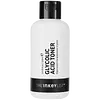What's inside
What's inside
 Key Ingredients
Key Ingredients

 Benefits
Benefits

 Concerns
Concerns

 Ingredients Side-by-side
Ingredients Side-by-side

Water
Skin ConditioningButylene Glycol
HumectantPropanediol
SolventGlycerin
Humectant1,2-Hexanediol
Skin ConditioningBetaine
HumectantGlyceryl Polymethacrylate
Panthenol
Skin ConditioningPPG-13-Decyltetradeceth-24
EmulsifyingNiacinamide
SmoothingCaprylic/Capric Triglyceride
MaskingAcrylates/C10-30 Alkyl Acrylate Crosspolymer
Emulsion StabilisingTromethamine
BufferingEthylhexylglycerin
Skin ConditioningParfum
MaskingDisodium EDTA
Sodium Polyacrylate
AbsorbentMagnesium Sulfate
Calcium Chloride
AstringentButylphenyl Methylpropional
PerfumingAcorus Gramineus Extract
HumectantLimonene
PerfumingManganese Sulfate
Skin ConditioningCitronellol
PerfumingChenopodium Quinoa Seed Extract
Skin ConditioningZinc Sulfate
AntimicrobialTocopherol
AntioxidantAscorbyl Glucoside
AntioxidantWater, Butylene Glycol, Propanediol, Glycerin, 1,2-Hexanediol, Betaine, Glyceryl Polymethacrylate, Panthenol, PPG-13-Decyltetradeceth-24, Niacinamide, Caprylic/Capric Triglyceride, Acrylates/C10-30 Alkyl Acrylate Crosspolymer, Tromethamine, Ethylhexylglycerin, Parfum, Disodium EDTA, Sodium Polyacrylate, Magnesium Sulfate, Calcium Chloride, Butylphenyl Methylpropional, Acorus Gramineus Extract, Limonene, Manganese Sulfate, Citronellol, Chenopodium Quinoa Seed Extract, Zinc Sulfate, Tocopherol, Ascorbyl Glucoside
 Reviews
Reviews

Ingredients Explained
These ingredients are found in both products.
Ingredients higher up in an ingredient list are typically present in a larger amount.
Betaine is a common humectant (a substance that promotes retention of moisture). It's known to be gentle on the skin and can help balance hydration.
This ingredient is best for improving hydration and soothing irritated skin. Studies also show it helps even out skin tone.
Fun fact: Betaine is naturally created in the skin and body. The kind found within cosmetic products can be either plant-derived or synthetic.
Another name for betaine is trimethylglycine.
Learn more about BetaineButylene Glycol (or BG) is used within cosmetic products for a few different reasons:
Overall, Butylene Glycol is a safe and well-rounded ingredient that works well with other ingredients.
Though this ingredient works well with most skin types, some people with sensitive skin may experience a reaction such as allergic rashes, closed comedones, or itchiness.
Learn more about Butylene GlycolEthylhexylglycerin (we can't pronounce this either) is commonly used as a preservative and skin softener. It is derived from glyceryl.
You might see Ethylhexylglycerin often paired with other preservatives such as phenoxyethanol. Ethylhexylglycerin has been found to increase the effectiveness of these other preservatives.
Propanediol is an all-star ingredient. It softens, hydrates, and smooths the skin.
It’s often used to:
Propanediol is not likely to cause sensitivity and considered safe to use. It is derived from corn or petroleum with a clear color and no scent.
Learn more about PropanediolWater. It's the most common cosmetic ingredient of all. You'll usually see it at the top of ingredient lists, meaning that it makes up the largest part of the product.
So why is it so popular? Water most often acts as a solvent - this means that it helps dissolve other ingredients into the formulation.
You'll also recognize water as that liquid we all need to stay alive. If you see this, drink a glass of water. Stay hydrated!
Learn more about Water